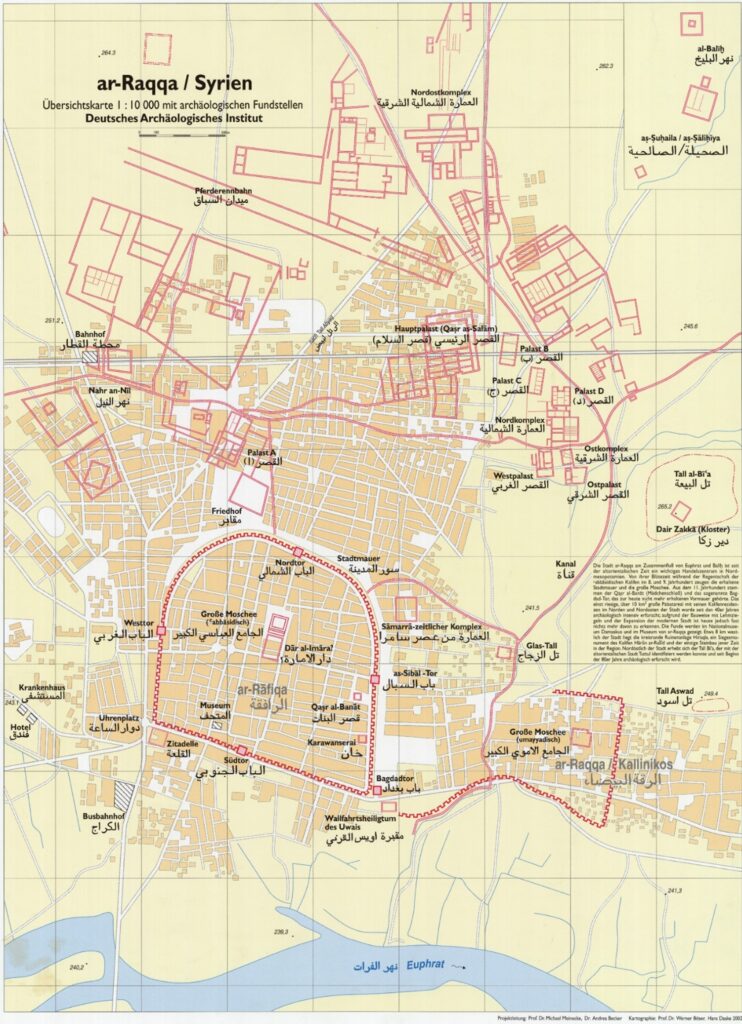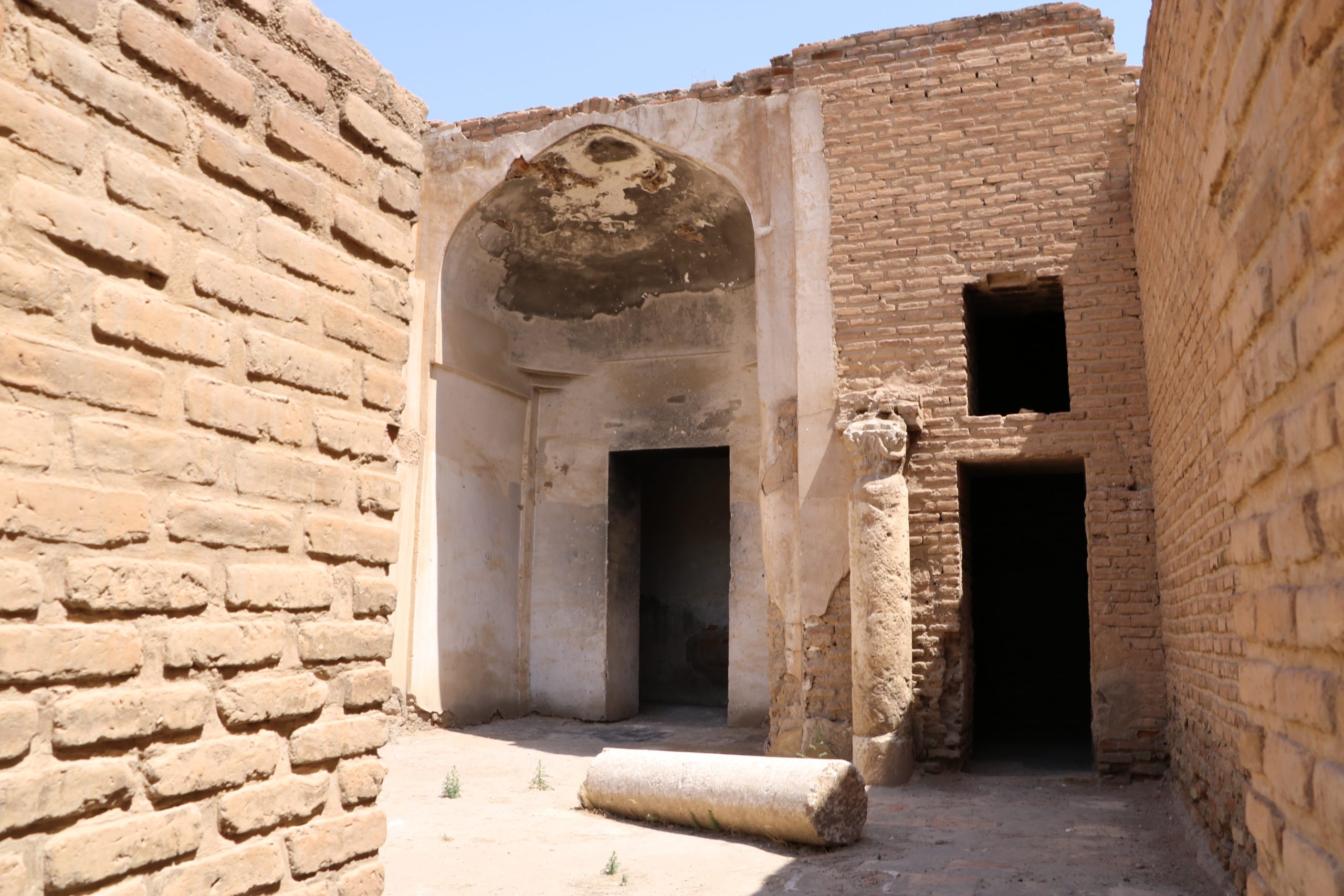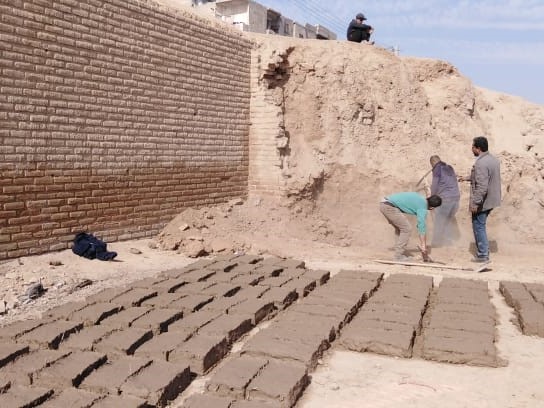Guide to Important Heritage Sites and Buildings in Raqqa

The “Rafekatuna” project aims to highlight traditional houses and remaining historic landmarks inside Raqqa’s walls. These mudbrick and baked brick houses retain the spirit and memory of the place, embodying the city’s tangible and intangible heritage. However, population growth and the lack of planning for expansion outside the old city have led many residents to convert these traditional houses into modern multi-story concrete buildings.
This urban transformation often occurs due to limited awareness of the historical value these houses represent for Raqqa’s identity and rich history—they are an original part of the city’s memory and heritage across centuries.
Through field studies and preliminary surveys inside the historic walls of Raqqa, 65 sites were documented, including palaces, traditional homes, walls, and historic gates. A guiding manual and interactive map were prepared to enhance community and visitor awareness of the sites’ significance and stimulate their protection and support.
The project includes two main phases:
First phase: Emergency documentation, damage assessment, and interventions for Raqqa’s architectural heritage (from November 2020 to February 2021)
Second phase: From June 1 to July 1, 2024
The guide provides:
A map of heritage and archaeological sites in Raqqa
Brief historical background for each documented landmark
Current use and occupancy status
Practical recommendations to protect these sites and opportunities to support owners in restoration with traditional materials
This material is prepared by the Rafekatuna team to preserve Raqqa’s architectural heritage and raise community awareness for its value and protection for future generations.



